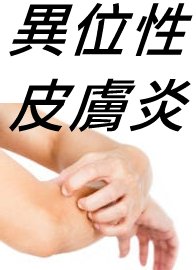| doctor | Chao Yuan-fang |
Chao Yuan-fang (550-630 AD, from the first year of the Liang Dynasty's Dabao era to the fourth year of the Tang Dynasty's Zhenguan era), is the author of "Zhubing Yuanhou Lun," a representative work in China on the exploration of disease origins and the description of symptoms.
During the Sui Dynasty's Daye era (605-617), Chao Yuan-fang served as a medical doctor. He was commissioned to write "Zhubing Yuanhou Lun," a book dedicated to discussing the origins and symptoms of diseases without including prescriptions. It summarizes medical experiences since the Wei and Jin dynasties, with rich content and detailed early observations and understandings of diseases. It meticulously discusses the origins of various diseases and the essentials of nine pulse-takings, providing detailed descriptions of the origins and symptoms of diseases in internal medicine, surgery, gynecology, pediatrics, and the five sense organs. Additionally, it includes diagnostics, health preservation, and conduction exercises. It is a valuable document in China's medical heritage.
Through his work "Zhubing Yuanhou Lun," Chao Yuan-fang left behind a wealth of medical experience for future generations. His understanding of the origins of many diseases was detailed and authentic, with unique insights into clinical diagnostics. Regarding the discovery of scabies mites, Chao said, "Wet scabies are small sores with thin skin, often oozing fluid after scratching, and always contain mites that can be picked out with a needle, resembling snails in water." This recognition of scabies mites as the source of scabies, based on meticulous observation, was a scientific advancement over the previous belief that it was caused by "damp evil."
Regarding the identification of Chinese Taxillus Herb worms in the digestive tract, Chao said, "The inch-long white worm... grows segment by segment, eventually reaching four to five feet." This clearly refers to tapeworms, as he described, "an inch long and white, small and flat in shape." The name "inch-long white worm" comes from this. By recognizing the shape of the inch-long white worm (tapeworm), he distinguished it from roundworms and pinworms, noting that this disease is related to eating raw beef or fish.
Regarding dysentery, he categorized it into seven types: red and white dysentery, red dysentery, bloody dysentery, purulent bloody dysentery, heat dysentery, chronic dysentery, and recurrent dysentery, a significant advancement over previous terms like "dysentery" and "diarrhea."Regarding pulmonary tuberculosis, he not only described symptoms similar to Ge Hong but also specifically named the conditions "deficiency fatigue" and "steaming bone fever," terms still in use today.
About goiter, over 1,400 years ago, he discovered its close relationship with drinking water, stating, "Drinking water from certain places can cause neck swelling in pregnant women." Although he couldn't know about the relationship between goiter and iodine at the time, this discovery was remarkable.
Regarding nyctalopia, Chao called it "night blindness," likening the condition to birds that see clearly during the day but are blind at night. Modern scientific practice has confirmed the accuracy of his understanding.
In gynecology, Chao was the first to propose indications for artificial late abortion, stating, "If a pregnant woman is weak or ill, unable to sustain the fetus, and it harms her health, the fetus should be removed." Although this was a last resort for the safety of the pregnant woman, in an era of low social status for women, this argument undoubtedly played a positive role in protecting women's health.
In surgery, he provided detailed records of intestinal anastomosis, demonstrating not only that such surgeries were performed in China over 1,400 years ago but also highlighting Chao's achievements in the field of surgery.
In the Zhubing Yuanhou Lun by Chao Shi, there are records that teach people to develop the good habit of rinsing their mouths after meals. It not only points out the relationship between dental diseases and oral hygiene but also includes the idea of encouraging people to develop good hygiene habits and the principle of prevention first. For example, he said: "All kinds of meat, if wetted by the water dripping from an old thatched roof with fistula disease, become poisonous and should not be eaten." He also said: The five domestic animals that die naturally or from pestilence are poisonous and should not be eaten. From today's perspective, these might seem like common sense, but at that time, it must have taken the accumulation of numerous cases of food poisoning to elevate this knowledge to a theoretical understanding! It should be said that this understanding holds an important place in the history of preventive medicine in our country.
From the above points, it is not difficult to see that Chao Yuan-fang had profound medical expertise and made significant contributions to the diagnosis of etiology and pathology in traditional Chinese medicine. These achievements could not have been accomplished without a realistic and pragmatic approach to scholarship, in-depth and meticulous research, and a spirit of dedication to science.
Chao's "General Treatise on the Causes and Symptoms of Diseases," abbreviated as Zhubing Yuanhou Lun, "Chao's Etiology," or "Treatise on the Causes and Symptoms of Diseases," was completed in 610 AD. The book consists of fifty volumes, divided into sixty-seven categories and one thousand seven hundred and twenty sections, detailing the causes and symptoms of various diseases across different medical fields, and discussing the diagnosis and prognosis of diseases.






